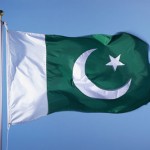 If one reviews Pakistan’s economy, the development seems lopsided. The successive governments have experimented with different models from private sector leading the economy to nationalization of the strategic industries to liberalization, deregulation and privatization. The GDP growth rate has varied significantly. It may be said that policy planners have failed in coming up with ‘home grown plan’. This failure can be attributed to persistent dependency on multilateral financial institutions and worst of all remaining under the clutches of the International Monetary Fund (IMF).
If one reviews Pakistan’s economy, the development seems lopsided. The successive governments have experimented with different models from private sector leading the economy to nationalization of the strategic industries to liberalization, deregulation and privatization. The GDP growth rate has varied significantly. It may be said that policy planners have failed in coming up with ‘home grown plan’. This failure can be attributed to persistent dependency on multilateral financial institutions and worst of all remaining under the clutches of the International Monetary Fund (IMF).
While the critics blame the IMF, they also fail to realize that nothing comes free in this world. The more precarious is the economy of a country, the more stringent are the conditions for lending. According to a report, since 1988 Pakistan has signed 12 different programs with the IMF, which is greater than all the countries located in the region. India has signed only one facility with the Fund, while countries like Nepal and Bangladesh have signed just two. Pakistan has been classified as a ‘prolonged user’ of the IMF support in 2002, raked third in the world, higher than every low-income African nation, but surpassed two countries i.e. Philippines and Panama.
Having remained under various IMF programs for nearly two decades, Pakistan’s economic development plan has been dictated by the lender of last resort. It is often said that all the programs stipulated stringent conditions, demanded structural changes and above all the reduction in subsidies and spending on public sector development programs, healthcare, and education. However, very few are ready to accept the fact that remaining under IMF surveillance is also forced the country to set certain targets and make concerted efforts to achieve these targets. It may also be said that had IMF surveillance was not there the country would have faced even worse conditions.
Usually, an IMF focuses on two points: 1) increasing revenue and 2) curtailing expenses. Both these measures are aimed at supporting the elites and squeezing the poor. If one refers to Pakistan, the proponents of increasing revenue focus on raising indirect tax collection, whereby rich are spared and poor have to pay tax through their nose. Less than 2% of total population owned over 90% of cultivable area. They are exempted from paying tax on income drawn from agriculture. Whereas poorest of the poor travelling in a bus pay tax on POL products, soap, food items and even medicines.
The policy planners are so obsessed with revenue collection that they impose high import duties on plant and machinery and even raw materials. They have no realization what so ever that this ‘front loading’ increase project cost and retail price of the manufacturers goods. To facilitate exports, income of exporters is either not taxes or a nominal percentage is collected. Paying rebate is also a big financial scam, sometimes the rebates paid exceed tax collection. One fails to understand the logic, if a tax has to be refunded, why is it collected to begin with?
Just to cite another example, 17% GST is collected on urea. This policy is based on ‘absurdity’. The cultivable land in Pakistan is nutrient deficient, which requires application of different types of fertilizers, urea is applied in the largest quantity, followed by DAP and other types. On one hand the government claims to be facilitating the farmers in achieving ‘food security’ but on the other hand raises the cost of basic input by imposing 17% GST. At present manufacturers are suffering due to huge inventories due to low offtake. Ironically, the government is offering the subsidy on the export of urea, but not willing to cut/suspend GST collection to facilitate the farmers in saving input cost. At present prices of commodities are touching low levels, affecting the income of farmers. Therefore, special incentives must be offered to the farmers.
Around the world government offer subsidies on various products to help those who suffer from limited income. Subsidies are offered to the farmers to encourage them to continue to produce, particularly food cereals and industrial inputs. However, one of the objections of multilateral donors is that often the beneficiries are those who don’t need financial assistance. Another serious objection is that the Government of of Pakistan does not pay the subsidy in actual. It sells product at a higher price to all the consumers and then pay part of the collection to those who needs to be supported.
Due to the pressure of the multilateral lenders/IMF, the government also collects very huge tax on POL products. This policy was introduced in the past, but ironically the elected governments have been following it without even a bit of realization that this policy must be discontinued. Another policy that needs specific mention is around 22% percent tax collected on mobile phone bills/easy loads. Ironically, cellular companies have acquired permissions to operate in Pakistan by paying huge amounts and have also invested millions of dollars in creating the required infrastructure. Therefore, the logic behind collection of such a huge tax is beyond comprehension.
These are a few of the examples that successive governments have been following the dictate of multilateral lenders/IMF just to please them so that more and more funds could be borrowed. The politicians as well as bureaucracy completely fails to understand that debt servicing has already become unsustainable. There is an urgent need to come up with ‘home grown plans’ to save the future generations from slipping below the poverty line.